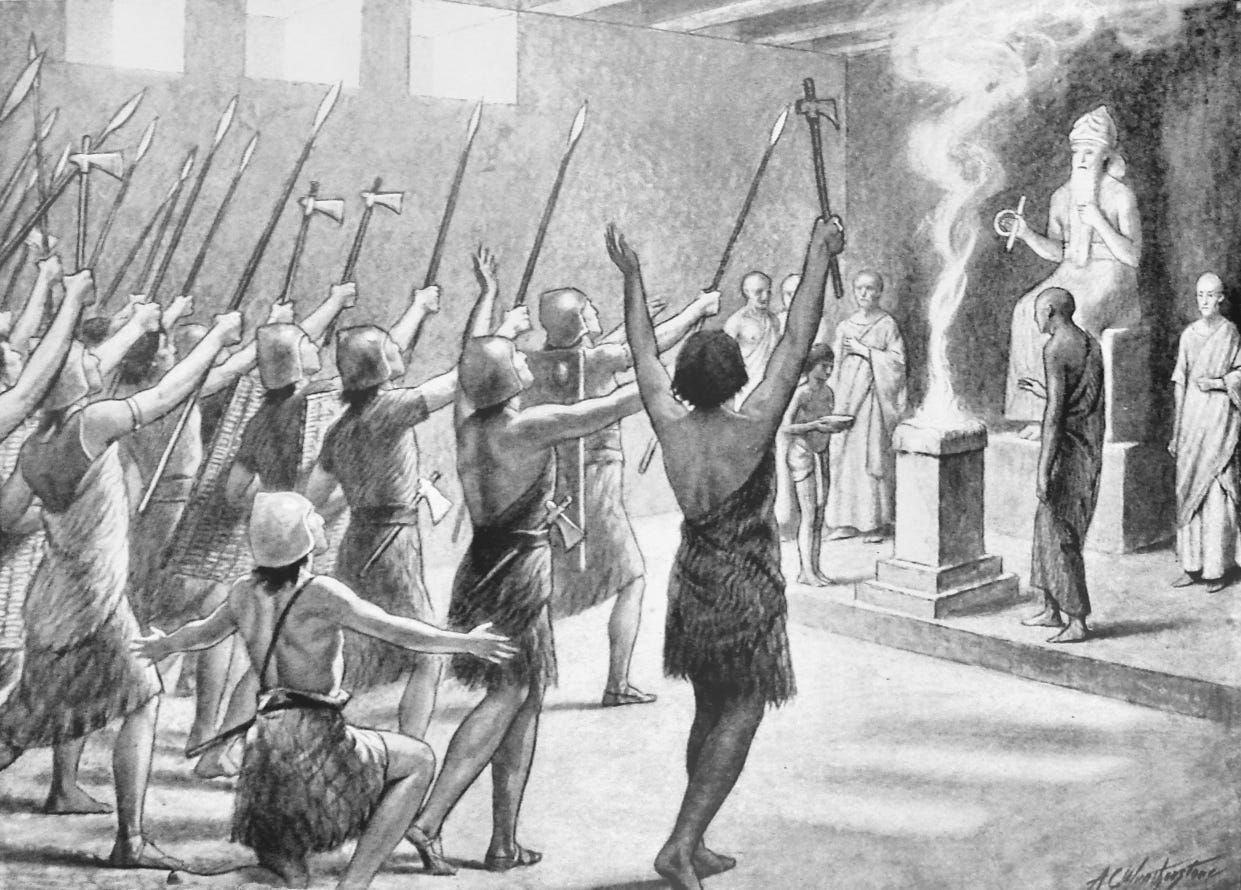Briefly, it makes sense to touch on the short lived Gutian period between 2141-2050 BCE when the mysterious “Gutian ethnic group” controlled most of the region out of their capital at Adab. Despite their only 91 year rule, the Gutians produce over nineteen different rulers, each with incredibly short reigns almost closer to a presidential system. The longest reigns are 6-7 years until the final king named Tirigan who appears to institute some form of political revolution in the state changing the nature of the system.
Very little is known about the Gutians considering their language is completely unknown and doesn’t seem to fit into any other groupings, and their dynasty appears like some kind of foreign incursion. We have no idea where their homeland was, with nearly a complete lack of inscriptions from their period. Even Tirigan is only known through his defeat at the hands of his nemesis Utu-hengal of Uruk, father in law of the future King of Ur and the unified empire Ur-Nammu. The image attached would depict a typical prayer ritual of the Sumerians for victory against the Gutians, and other various conflicts.
We actually briefly brought up the Gutians in our identification for Tidal of the Goyim as representative of a foreign coalition. In the important “Cuthean Legend of Naram-sin”, the eponymous Naram-sin of Akkad fights a major conflict against what are said to be variously Hurrians, cave-dwellers (troglodytes) or demonic bird-like creatures (similar to a harpy, or siren). This unknown horde is referred to as “Umman Manda” or “the horde from who knows where”1 and has been variously identified with Hurrians, Medes, or even Scythians.2 Some even suggest they have a link to the similarly nomadic Hyksos who had a large Canaanite stock3, but could have easily had Hurrian members as we outlined in previous sections on the Canaanites. In a sense, these are the “goyim” nations that tend to lack specific founding figures, or geographic states due to their nomadic nature.
Gutians might have been part of the Umman Manda, however in the actual legend the Gutians are ‘scattered’ by the Umman Manda4 on their way to attack Akkad after defeating the “army of the upper seas”.5 Ultimately, Gutians are not very important rulers despite their critical role in the region's events, filling somewhat of a power vacuum between the important Akkadian and Ur periods.6
"Umman-manda [1] (EN)". Corpus of Ancient Mesopotamian Scholarship/Geography of Knowledge. Open Richly Annotated Cuneiform Corpus, University of Pennsylvania.
S. Ferruh Adalı (2011). The Scourge of God: The Umman-manda and Its Significance in the First Millennium BC. Neo-Assyrian Text Corpus Project.
Drews, Robert. The Coming of the Greeks: Indo-European Conquests in the Aegean and the Near East. Princeton University Press. 1988. p. 227.
O. R. Gurney, "The Sultantepe Tablets (Continued). IV. The Cuthaean Legend of Naram-Sin", Anatolian Studies, vol. 5, pp. 93–113, 1955
Westenholz, Joan Goodnick, "Chapter 10. “Naram-Sin and the Enemy Hordes”: The “Cuthean Legend” of Naram-Sin". Legends of the Kings of Akkade: The Texts, University Park, USA: Penn State University Press, pp. 263-368, 1997
Frayne, Douglas, "Ur-Nammu E3/2.1.1". Ur III Period (2112-2004 BC), Toronto: University of Toronto Press, pp. 5-90, 1997






